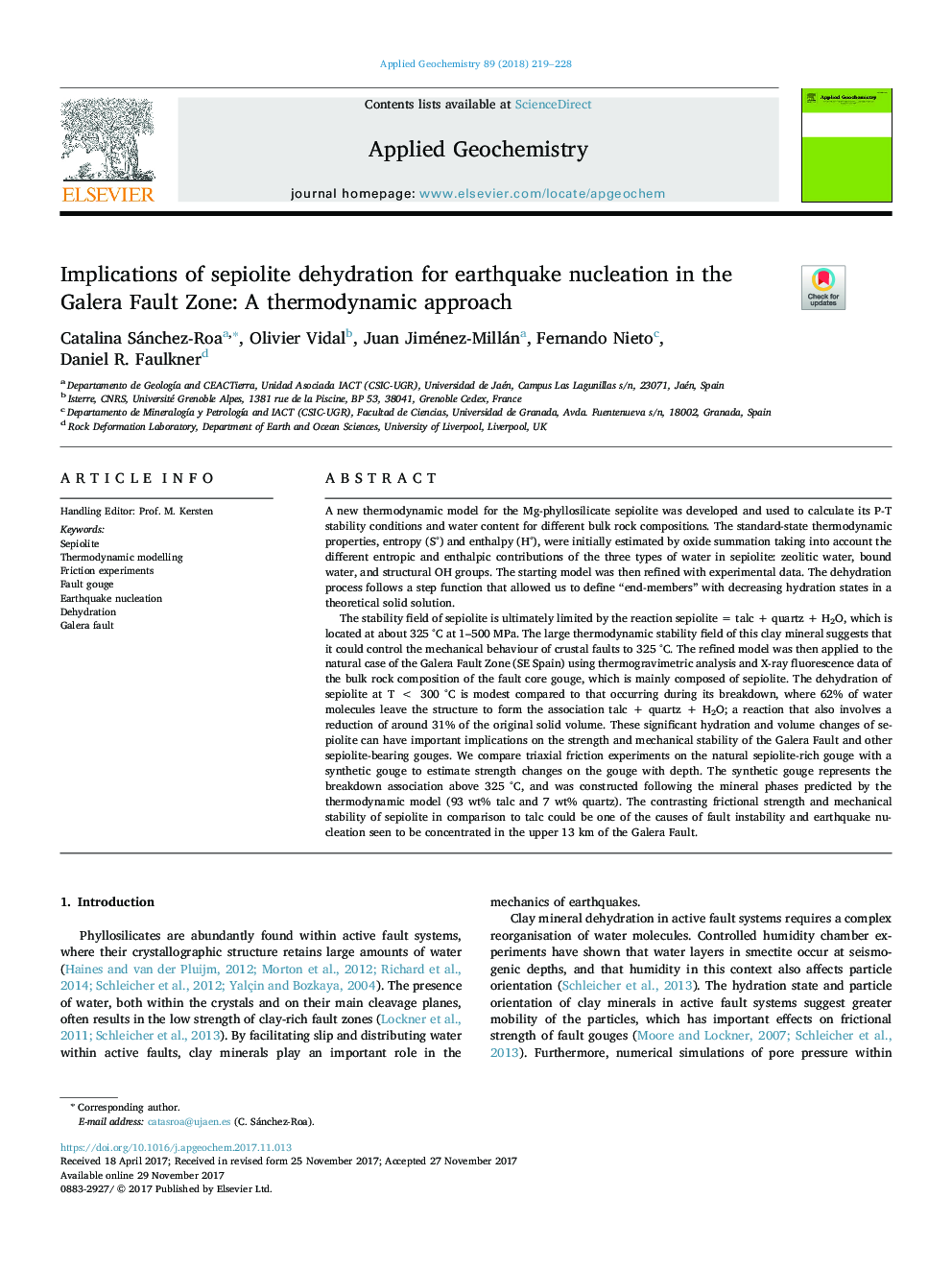| Article ID | Journal | Published Year | Pages | File Type |
|---|---|---|---|---|
| 8863212 | Applied Geochemistry | 2018 | 10 Pages |
Abstract
The stability field of sepiolite is ultimately limited by the reaction sepiolite = talc + quartz + H2O, which is located at about 325 °C at 1-500 MPa. The large thermodynamic stability field of this clay mineral suggests that it could control the mechanical behaviour of crustal faults to 325 °C. The refined model was then applied to the natural case of the Galera Fault Zone (SE Spain) using thermogravimetric analysis and X-ray fluorescence data of the bulk rock composition of the fault core gouge, which is mainly composed of sepiolite. The dehydration of sepiolite at T < 300 °C is modest compared to that occurring during its breakdown, where 62% of water molecules leave the structure to form the association talc + quartz + H2O; a reaction that also involves a reduction of around 31% of the original solid volume. These significant hydration and volume changes of sepiolite can have important implications on the strength and mechanical stability of the Galera Fault and other sepiolite-bearing gouges. We compare triaxial friction experiments on the natural sepiolite-rich gouge with a synthetic gouge to estimate strength changes on the gouge with depth. The synthetic gouge represents the breakdown association above 325 °C, and was constructed following the mineral phases predicted by the thermodynamic model (93 wt% talc and 7 wt% quartz). The contrasting frictional strength and mechanical stability of sepiolite in comparison to talc could be one of the causes of fault instability and earthquake nucleation seen to be concentrated in the upper 13 km of the Galera Fault.
Keywords
Related Topics
Physical Sciences and Engineering
Earth and Planetary Sciences
Geochemistry and Petrology
Authors
Catalina Sánchez-Roa, Olivier Vidal, Juan Jiménez-Millán, Fernando Nieto, Daniel R. Faulkner,
